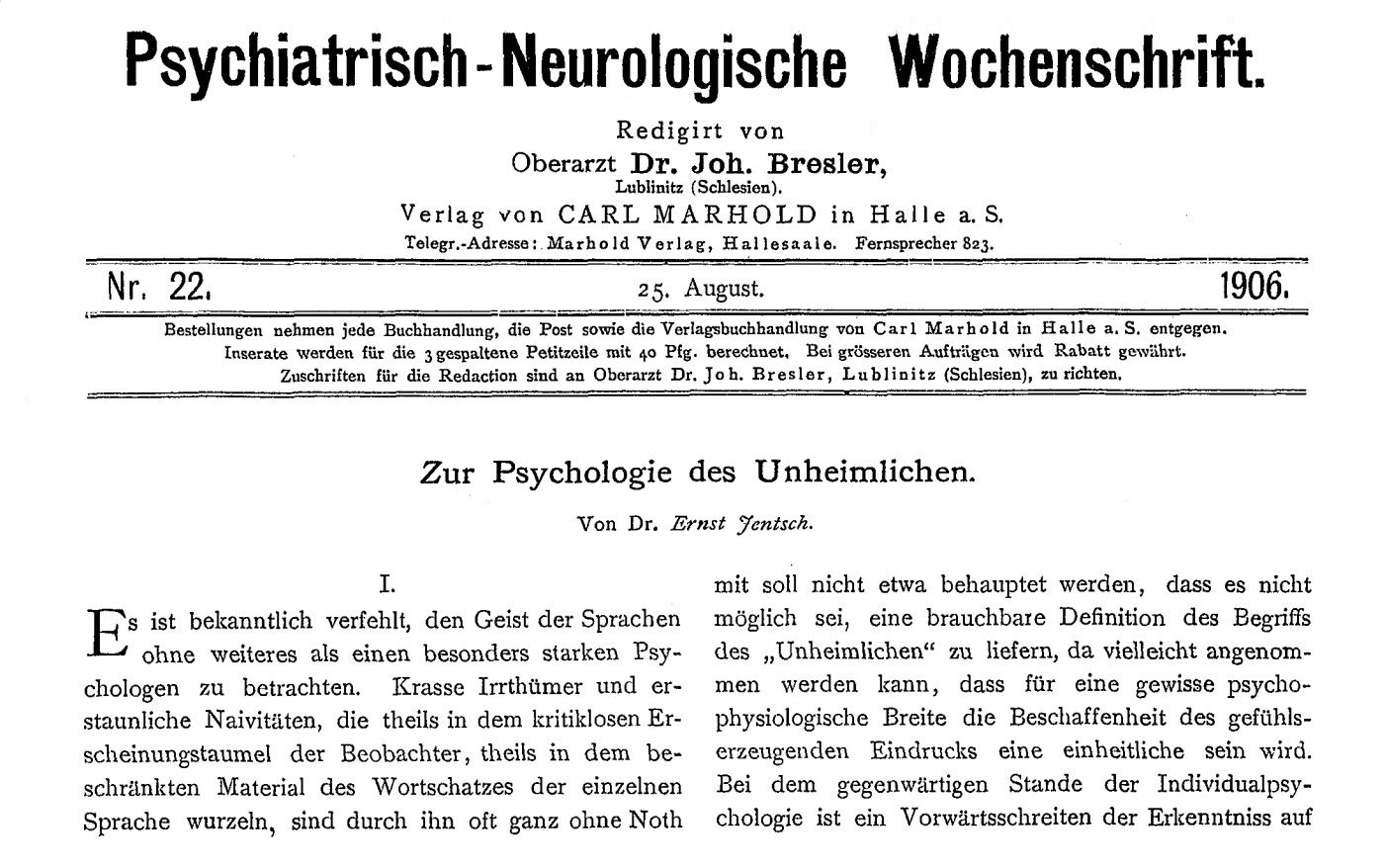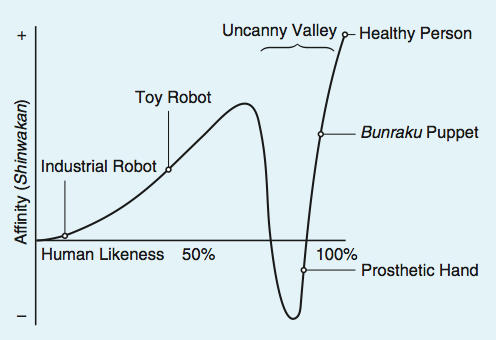Part 14, March 19, 2021 - AI in the Uncanny Valley (Reading time: 3 minutes)
The German psychiatrist Ernst Anton Jentsch wrote in “Zur Psychologie des Unheimlichen” (On the Psychology of the Uncanny), published in 1906 and often-quoted up to now: “Among all the psychical uncertainties that can become a cause for the uncanny feeling to arise, there is one in particular that is able to develop a fairly regular, powerful and very general effect: namely, doubt as to whether an apparently living being really is animate and, conversely, doubt as to whether a lifeless object may not in fact be animate“.

In our days, Dr. Jentsch is considered, along with Sigmund Freud, with whom he has corresponded frequently, to be a pioneer of the „Uncanny Valley Theory”, the theory of scary things. The original article (German) can be accessed here. The English Translation by the American philosopher Roy Sellars is found here.
We encounter the uncanny in dreams, in literature and movies, but as well, described by Jentsch in detail, in reality, for example, at the sight of a “disembodied body” (i.e., a corpse) or an artificial but human-like object or part of it, e.g., a mechanical, “inanimate” hand prosthesis.
Masahiro Mori, professor emeritus for robotics at Tokyo Institute of Technology, associated the uncanny with Artificial intelligence. His article, “The uncanny valley”, published in the Japanese scientific journal “Energy” in 1970, transferred the uneasiness at the sight of prostheses to frequently observed reactions of humans encountering robots. Adults often behave reluctant and some children start to cry when confronted with humanoid robots.

This graph in Mori's work shows that much, but not sufficient likeness of a robot to a healthy human triggers a negative affect. Human Likeness = normalized measure of similarity to a healthy person, Affinity = emotional attraction through resemblance, today often called “Emphatic Response”, “Familiarity”, etc.
The minimum of the curve, that, exactly, is the "Uncanny valley" afflicted with antipathy, marks the acceptance gap in which reluctance or even disgust arises. Mori's article appeared in 2012 as authorized English translation. You can find the reprint here.
The Disney company helped the Uncanny Valley to – unwanted – publicity in 2004 Christmas season, when they unintentionally directed the movie “The Polar Express” into it. Some of the computer-animated characters produced unwanted horror by using truly the wrong quantity of similarity to humans. Crying children all over the world ran out of cinemas. Disney has learned from this; they avoid the problem by overdrawing characters in a comic-like manner since then. Disney stays on the left of the Uncanny Valley.
Robots, perceived as soulless, violate the acceptance of the target group. This effect transfers to chatbots: answering machines supported by Artificial intelligence. Unmindfully trained chatbots at the Uncanny valleys edge: this is the topic of the clinical trial “In the shades of the uncanny valley: An experimental study of human-chatbot interaction” by Leon Ciechanowski, published in the journal "Future Generation Computer Systems" in 2019. The full abstract is freely available here.
Leon Ciechanowski and his co-authors found in data of muscle activity and cardiac currents, “… that participants were experiencing lesser uncanny effects and less negative affect in cooperation with a simpler text chatbot than with the more complex, animated avatar chatbot.” They end with a call for a deeper understanding of users: “In our view, understanding the user's side may be crucial for designing better chatbots in the future and, thus, can contribute to advancing the field of human-computer interaction.”
Making chatbots more and more human-like for better acceptance, this advice, given by numerous AI chatbot providers, might be well-intentioned. However: it can bring the chatbot directly into the valley of horror.
But you, dear reader, now know what to look out for when improving the world with Artificial intelligence on an Industrial PC from omtec.de: elude the Uncanny Valley!
